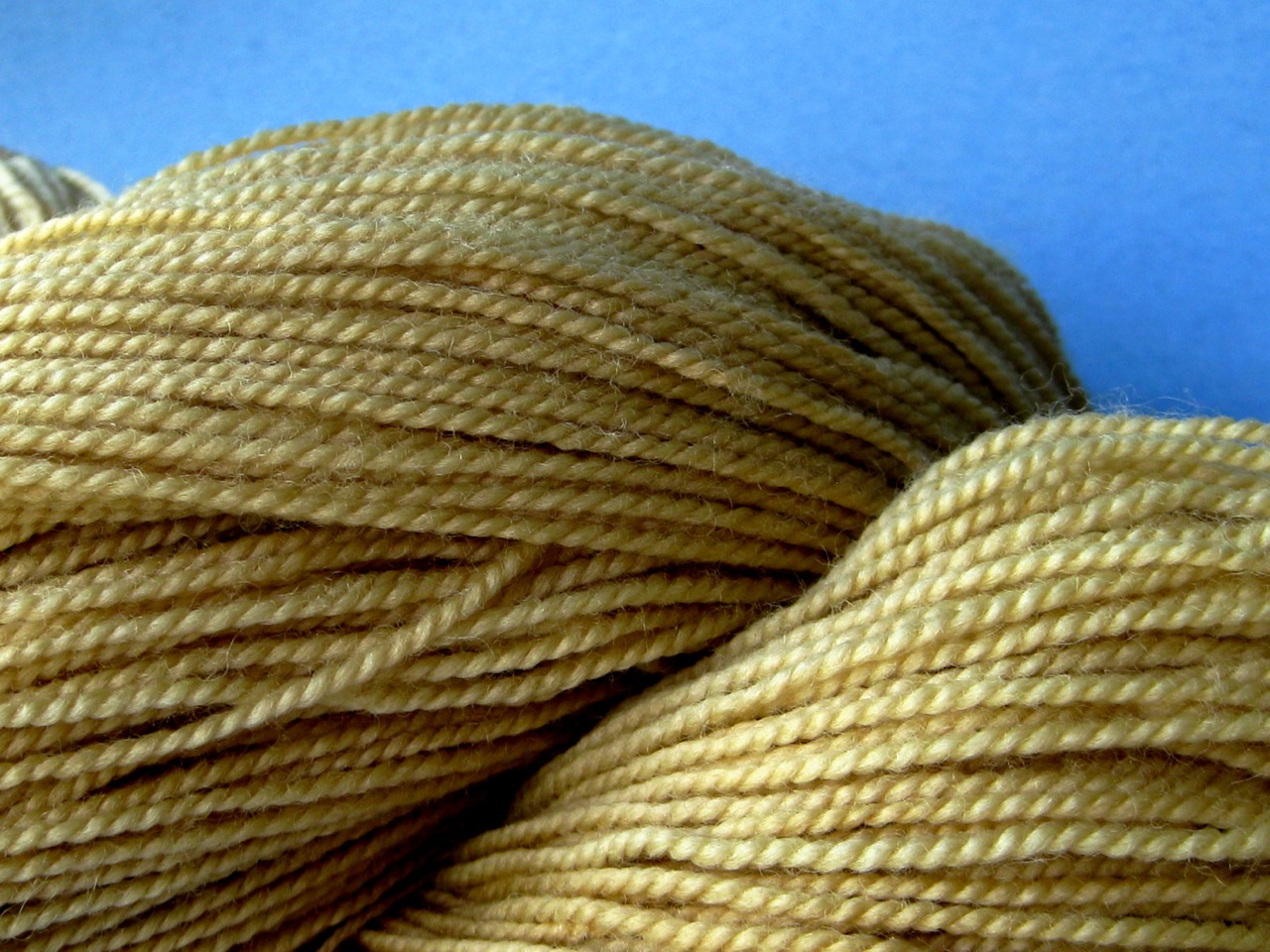Exclusively at YarnStory in Honolulu!
Read MoreSample Yarns | Natural Plant Dye
Back in September I mixed up a batch of dried pomegranate rind dye and experimented with it; here are the results!
Natural plant dyed yarns
These are all basic kitchen cotton yarn (Peaches & Creme 100% cotton). From left to right: dried pomegranate rind and lemongrass (yellow), dried pomegranate rind (yellow), fresh mint (leaves and stems) with iron mordant (gray), and fresh mint, dried pomegranate, lemongrass with iron mordant (brown).
Wool yarn dyed with dried pomegranate rinds
This sock weight wool yarn was dyed with dried pomegranate rinds. I then overdyed it with either dried kukui leaf dye or dried bamboo leaf dye - I'm not sure which. Either way, it didn't change the color much, if at all.
Rehydrated pomegranate rinds, ready for grinding.
Pomegranate Rind Dye | Natural Plant Dye
My parents have a pomegranate tree that produces fruit slowly and steadily, so every few weeks I add one or two more rinds to a bag in my freezer. I had a full bag, so I dried out the rinds as much as possible in direct sunlight, and then got them completely dry in the oven on the lowest setting. When I was ready to make a batch of dye, I soaked the dried rinds overnight and then blended the rehydrated rinds with the soaking water in my Vitamix blender. The resulting pulp was strained through a mesh strainer, and then strained again through a piece of muslin fabric. It's extra work, but using dried rinds does make a difference - when I did a batch with fresh rinds last year, the results were much lighter. Because of the tannin content, pomegranate rinds can also be used as a mordant, so I mixed it with a batch of mint leaf dye and a batch of lemongrass leaf dye.
Ground up pomegranate rinds, after the first straining - I had to strain it through a piece of muslin fabric to get all of the little bits you can see here out.
Photos of the dyed yarns to come! If you are interested in using pomegranate rind and mint leaf botanical dyes, The Handbook of Natural Plant Dyes by Sasha Duerr has some general information about pomegranate rind and a recipe for mint leaf dye.



